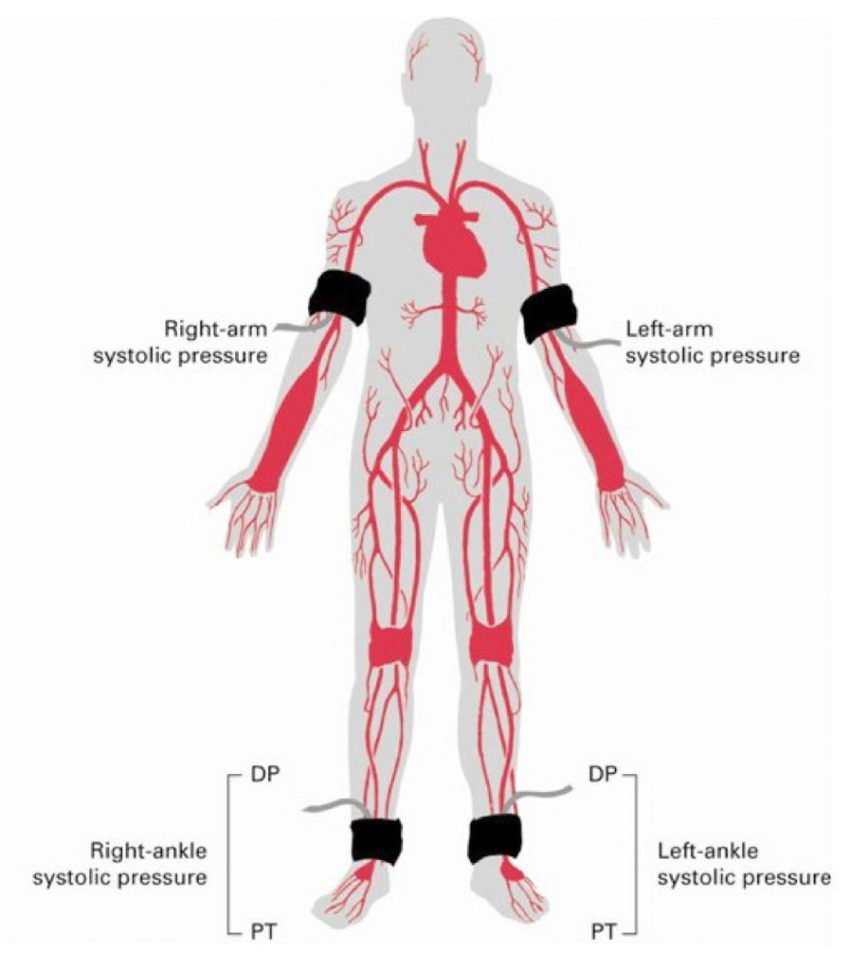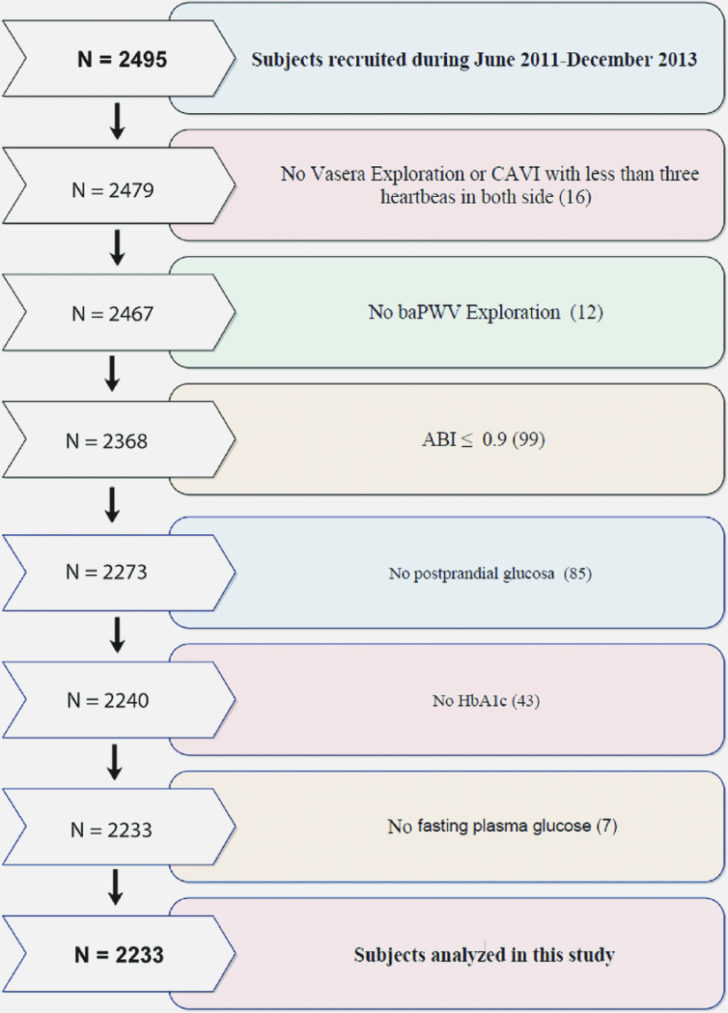39 ankle brachial index worksheet
PDF Ankle Bracheal Index - CLWK The Ankle Brachial Index (ABI) is a non-invasive test to measure the arterial blood flow in the lower legs. It is used, as part of a comprehensive lower leg assessment to screen clients for the presence and severity of arterial compromise and to identify those clients who require further vascular PDF (Ankle Brachial Index Assessment Form) - meddevicedepot.com 1-800-554-5090 Listening to Life MKT0042BTM Lower Extremity Physiologic Study, Single Level (Ankle Brachial Index Assessment Form)
PDF Ankle Brachial Index (ABI) - Cloudinary Baptist Heart Ankle Brachial Index (ABI) An Ankle Brachial Index is a test to check the circulation in your legs. This can help determine if there is any blockage that may be causing pain with exercise, numbness, skin discoloration or coldness in the legs. Blood pressures are taken in your arms and legs and are compared for differences. If you are
Ankle brachial index worksheet
Ankle Brachial Index (ABI) Test - Cleveland Clinic An ankle-brachial index test or ABI test, which is quick and noninvasive, is the best way to know if you have peripheral artery disease (PAD). Blocked or narrow blood vessels in your legs give you bad circulation. PAD also increases your risk of stroke, heart attack and other cardiovascular problems. A test result of 1.0 to 1.4 is normal. Abi Worksheets - K12 Workbook Abi. Displaying all worksheets related to - Abi. Worksheets are Working with people with abi training materials handouts, Ask an agent work, Disability awareness activity packet, Ankle brachial index assessment form, Quick reference guide for clinicians, Ankle brachial index assessment form, Working with people with abi materials for ... How to Perform An Ankle Brachial Index - WoundReference The ankle brachial index (ABI) is the ratio between the blood pressure in the ankles and the blood pressure in the arms. Blockage in the arteries of the legs causes less blood flow to reach the ankles. This reduces the blood pressure in the ankle. The ankle brachial index is lower as peripheral artery disease is worse. The severity of peripher
Ankle brachial index worksheet. Ankle-Brachial Index (ABI) Test - WebMD Your doctor uses the blood pressure results to come up with a number called an ankle-brachial index. Here's what the numbers mean: 0.9 or less. You have PAD. The lower the number, the more blockage... PDF S-FC03: Calculate an Ankle Brachial Pressure Index and Toe Brachial ... S-FC03: Calculate an Ankle Brachial Pressure Index and Toe Brachial Pressure Index. Scope and objectives of clinical task. This CTI will enable the health professional to: accurately measure and calculate an Ankle Brachial Pressure Index (ABI) and Toe Brachial Pressure Index (TBI) to support risk categorisation findings if indicated by the findings from the implementation of CTI S-FC01: Assess the risk of foot complications and CTI S-FC02: Doppler ultrasound of the foot and ankle. PDF Ankle-Brachial Index: A Diagnostic Tool for Peripheral ... - SonoNet ABI = Ankle systolic/brachial systolic . 95/130 . 130/130: ABI . 1.0 : 0.73 For example, consider the results at the right. The ABI for this patient is calculated by using 130 (the higher of the two brachial pressures) as the denominator and 95 and 130 as the numerators for the right and left legs, respectively. The ABI for PDF Quick Reference Guide for Clinicians - University of Kentucky Ankle Brachial Index Quick Reference Guide for Clinicians Purpose: This document was originally developed by the WOCN Society's Clinical Practice Wound Subcommittee as a best practice document for clinicians.1 Its purpose is to provide clinicians with relevant information about the ankle brachial
Measurement and Interpretation of the Ankle-Brachial Index The ankle-brachial index (ABI) is the ratio of the systolic blood pressure (SBP) measured at the ankle to that measured at the brachial artery. Originally described by Winsor 1 in 1950, this index was initially proposed for the noninvasive diagnosis of lower-extremity peripheral artery disease (PAD). 2, 3 Later, it was shown that the ABI is an ... Abi Form: the Form in Seconds - Fill Out and Sign Printable PDF ... Follow the step-by-step instructions below to design your ankle brachial index testing: Select the document you want to sign and click Upload. Choose My Signature. Decide on what kind of signature to create. There are three variants; a typed, drawn or uploaded signature. Create your signature and click Ok. Press Done. Ankle-Brachial Index Test - Alberta A normal resting ankle-brachial index is 1.0 to 1.4. This means that your blood pressure at your ankle is the same or greater than the pressure at your arm, and suggests that you do not have significant narrowing or blockage of blood flow. footnote 1. Abnormal. Abnormal values for the resting ankle-brachial index are 0.9 or lower and 1.40 or ... Ankle Brachial Index (ABI) For PAD Risk Calculator The Ankle Brachial Index (ABI) calculator is basically defined by the ABI formula, which is the systolic pressure at the ankle divided by the systolic pressure at the arm. It is used as diagnostic mean with a sensitivity of 90% and a specificity of 98% in detecting stenosis but also to monitor medical treatments or recovery after angioplasty.
Ankle-brachial Pressure Index (ABPI) Measurement - Geeky Medics The ankle-brachial pressure index (ABPI) is a non-invasive method of assessing peripheral arterial perfusion in the lower limbs. ABPI is a ratio composed of the blood pressure of the upper arm (brachial artery) and the blood pressure of the lower limb (dorsalis pedis and the posterior tibial artery). Ankle-brachial index - Mayo Clinic An ankle-brachial index number is this range indicates that you have borderline PAD. Your doctor might recommend an exercise ankle-brachial index test. PAD (less than 0.90). An ankle-brachial index number in this range is considered abnormal and indicates a diagnosis of PAD. Your doctor may recommend additional testing, such as ultrasound or angiography, to view the arteries in your legs. Ankle Brachial Index Test | Johns Hopkins Medicine The ankle brachial index, or ABI, is a simple test that compares the blood pressure in the upper and lower limbs. Health care providers calculate ABI by dividing the blood pressure in an artery of the ankle by the blood pressure in an artery of the arm. The result is the ABI. Ankle-Brachial Index (ABI) - Stanford Health Care Ankle-Brachial Index (ABI) A test in which blood pressure is taken in the arms and in the legs. ABI is a comparison of the blood pressure in the ankle with the blood pressure in the arm using a regular blood pressure cuff and a Doppler ultrasound device. To determine the ABI, the systolic blood pressure (the top number of the blood pressure ...
PDF Procedure Name: Ankle Brachial Index Patient Preparation Procedure Name: Ankle Brachial Index Indications: IDDM or NIDDM, HTN, hyperlipidemia, heart disease, smoking, intermittent claudication, nocturnal claudication, rest pain, lower extremity parathesia, unhealed ... If the Flo-Lab does not send the worksheets directly to pacs, a patient info page must be taken on the ultrasound unit and sent to ...
Ankle Brachial Index | Stanford Medicine 25 | Stanford Medicine Place the blood pressure cuff on the arm, with the limb at the level of the heart. Place the ultrasound gel in the antecubital fossa over the patient's brachial pulse. Place the transducer of the handheld Doppler on the gel, and position the transducer to maximize the intensity of the signal.
Ankle Brachial Index: Quick Reference Guide for Clinicians - LWW abi is a noninvasive vascular screening test to identify large vessel, peripheral arterial disease by comparing systolic blood pressures in the ankle to the higher of the brachial systolic blood pressures, which is the best estimate of central systolic blood pressure. 8, 11 - 14 abi is performed using a continuous wave doppler, a sphygmomanometer …
simpleABI Systems | Vascular Testing Equipment | Newman Medical An ABI test, also known as an ankle brachial index test, measures the blood flow to the legs and feet in order to highlight any potential problems that could be PAD. ABI tests are performed using a vascular ABI system. PAD testing has never been easier thanks to our complete family of user friendly simpleABI systems that provide the information and reports you need quickly and intuitively.
PDF ABI WORKSHEET - SonoNet The ABI for each leg is determined by using the higher of the two readings from either the PT or DP arter-ies, and the higher of the two brachial readings. The lower ABI of the two is used for diagnostic purposes. An ABI measurement can usually be performed in less than 10 minutes. (See sample ABI worksheet.) PERFORMING THE ABI TEST Step 1.
PDF ABI WORKSHEET - cdn.ymaws.com Step 1. Have the patient lie in a supine position with shoes and stockings removed for at least 10 minutes prior to obtaining blood pressure measurements. Step 2. Apply the blood pressure cuff snugly on the upper arm with the lower edge of the cuff 1 inch above the antecubital fossa.
ABI Calculator (Ankle-Brachial Index) The formula used in the ABI calculator is very simple. It goes as follows: Right ABI = highest right ankle systolic pressure / highest brachial systolic pressure. Left ABI = highest left ankle systolic pressure / highest brachial systolic pressure. Systolic blood pressure is the pressure on the walls of the blood vessels when the heart ...
How to Take an Ankle Brachial Index: 14 Steps (with Pictures) - wikiHow The normal resting ankle brachial index is 1.0 to 1.4. The closer the ABI of the patient to 1, the better the result is. This means that the arm blood pressure should be as close as possible to the ankle blood pressure. [9] An ABI of less than 0.4 suggests severe peripheral arterial disease. The patient may develop non-healing ulcer or gangrene.
Ankle Brachial Index & Toe Brachial Index | Hokanson The Ankle Brachial Index exam is a simple, fast and non-invasive exam that assesses vascular health in the peripheral arteries. An Ankle Brachial Index (ABI) is the definitive screening test for PAD and one of the most simple to perform. Hokanson has many instruments for performing ABI's, to meet your testing requirements.
How to Perform An Ankle Brachial Index - WoundReference The ankle brachial index (ABI) is the ratio between the blood pressure in the ankles and the blood pressure in the arms. Blockage in the arteries of the legs causes less blood flow to reach the ankles. This reduces the blood pressure in the ankle. The ankle brachial index is lower as peripheral artery disease is worse. The severity of peripher
Abi Worksheets - K12 Workbook Abi. Displaying all worksheets related to - Abi. Worksheets are Working with people with abi training materials handouts, Ask an agent work, Disability awareness activity packet, Ankle brachial index assessment form, Quick reference guide for clinicians, Ankle brachial index assessment form, Working with people with abi materials for ...
Ankle Brachial Index (ABI) Test - Cleveland Clinic An ankle-brachial index test or ABI test, which is quick and noninvasive, is the best way to know if you have peripheral artery disease (PAD). Blocked or narrow blood vessels in your legs give you bad circulation. PAD also increases your risk of stroke, heart attack and other cardiovascular problems. A test result of 1.0 to 1.4 is normal.











0 Response to "39 ankle brachial index worksheet"
Post a Comment